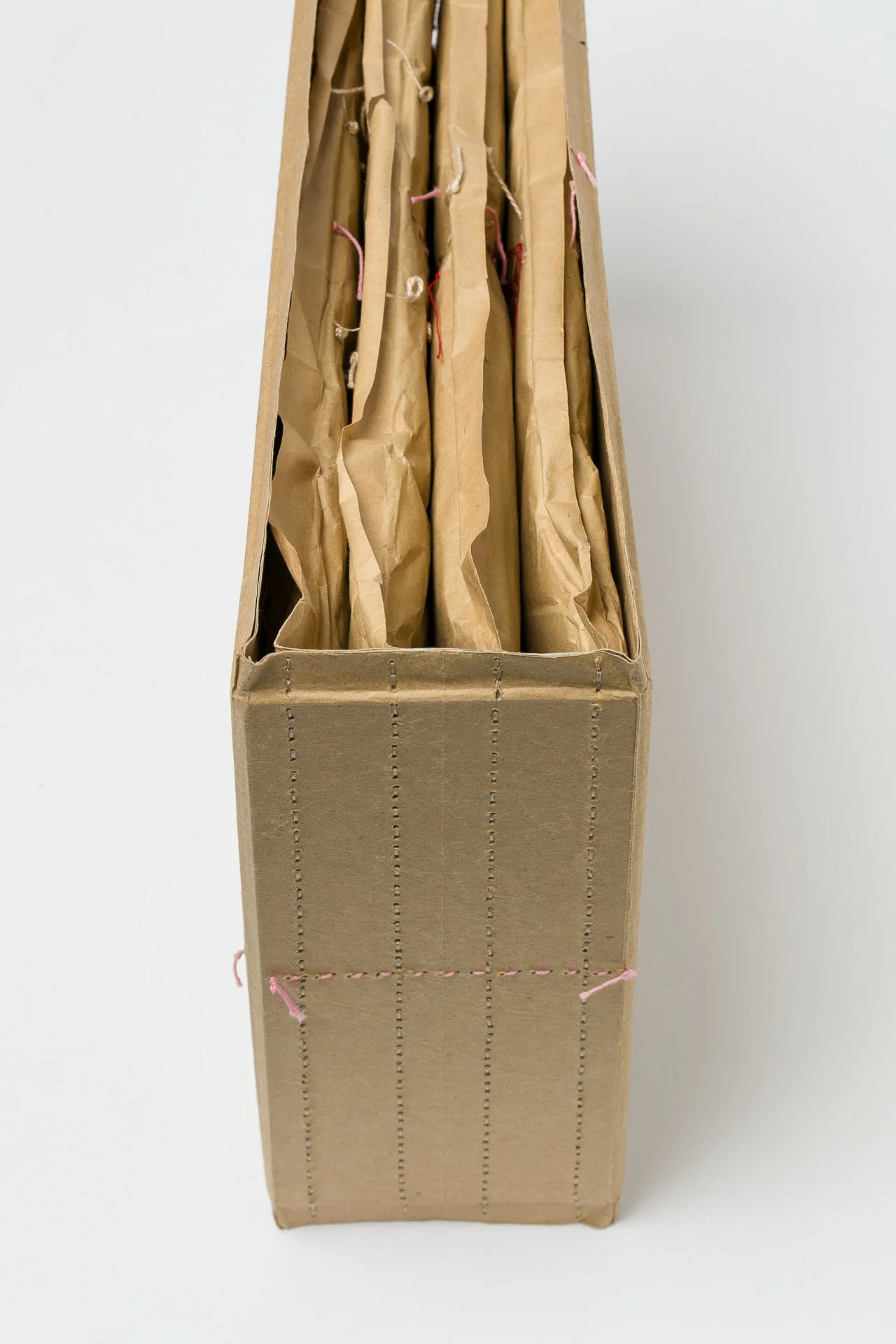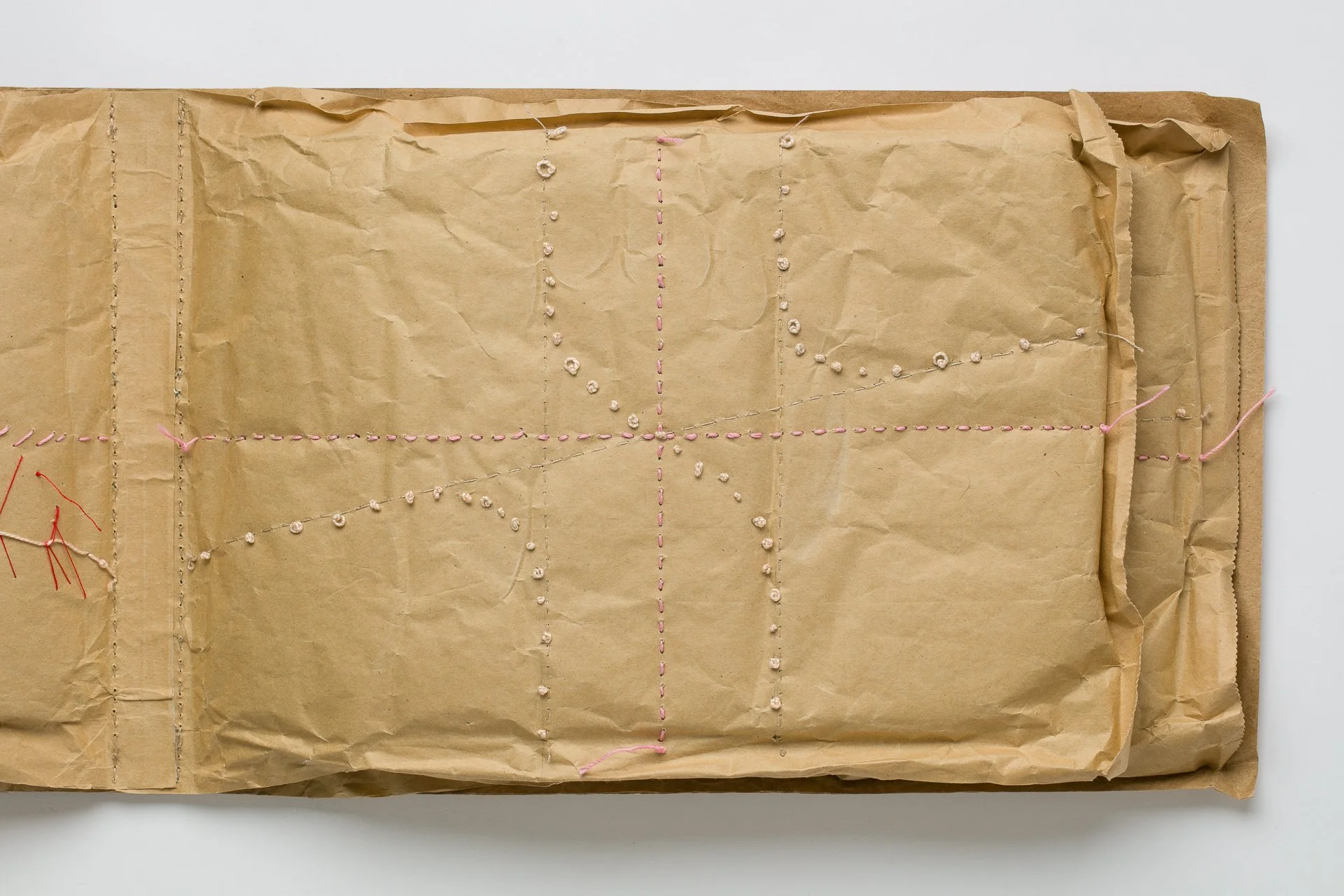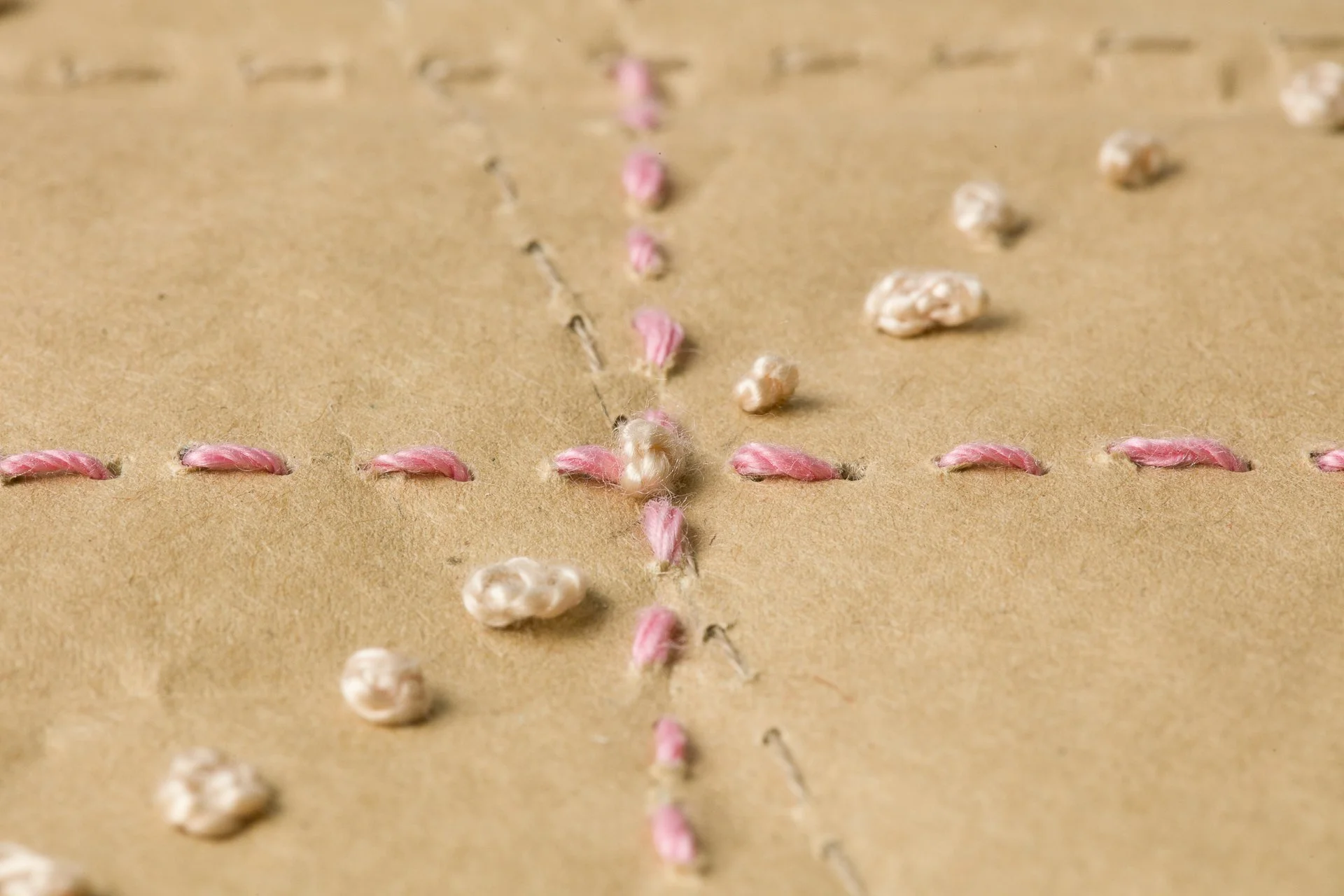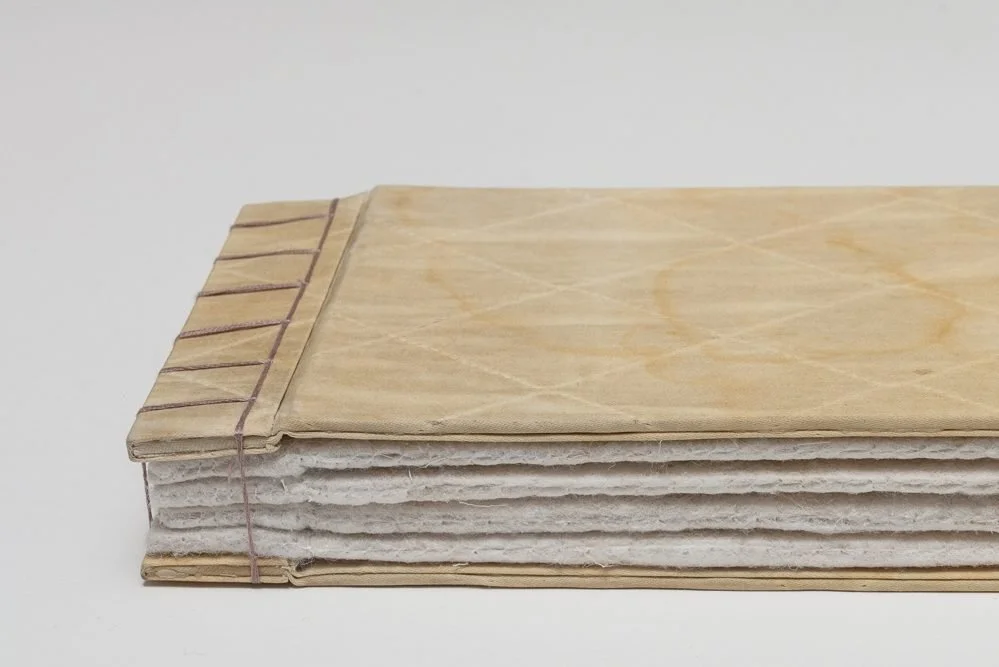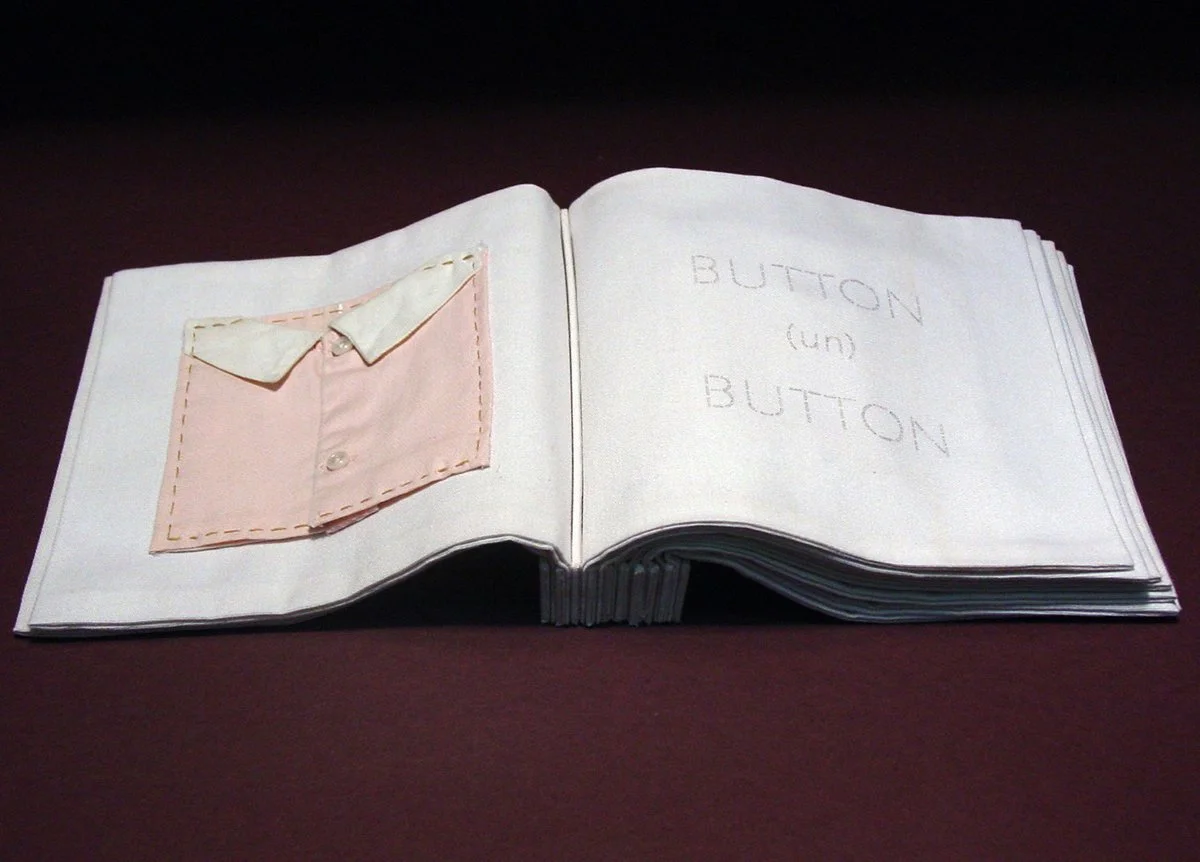
Photos by the artist and by Wes Magyar.
Edition
unique book (edition of 1)
Measurements
9.5” x 13” x 3.75” closed; 9.5” x 26” x 1.25-2.5” each two-page spread
In The Collection Of
Special Collections, University of Denver Penrose Library
About the Book:
Rational-Irrational employs toss-away materials to explore relationships between seemingly opposing qualities – control and abandon, linearity and expressiveness, precision and randomness – to comment upon perceptions of so-called “feminine” nature. Stitchwork “text” has been sewn onto disposable paper packing pillow “pages” using established and improvisational sewing techniques. On the front of each page, graphs of rational mathematical functions are carefully stitched and embroidered; on the back of each page, mistakes and irregularities abound. Blind and gestural sewing techniques were used to achieve the more spontaneous, “unpredictable” nature of this stitchwork, and marks and irregularities are incorporated as marks o value, indicators of the imperfect humanity creating them.
My book work is usually carefully planned and crafted, and although I knew what I intended the process to be, the stitching this book was a “throw caution to the winds” moment and I had to trust that my spontaneous, wild sewing would not appear too intentional. Setting a timer so that the backside of each page was only allowed 15 minutes helped!
About the Text:
Words can make content accessible, which was not what I wanted for Rational-Irrational. Instead, the “text” is limited to the graphic representation of mathematical function and the remnant gestures of stitching - both rich with meaning but not to those who don’t know the language. I gravitated towards mathematics as a language where “irrational” is a statement of nature rather than a judgement.
My daughter assisted by explaining different functions to me over the phone and directing me how to draw them. In translating her words into graphs, I was better able to understand the nature of the functions and choose how to utilize them in the book.
About the Materials and Processes:
Four paper packing pillows are sewn with embroidery thread, using techniques that include precisely marked and measured stitches, blind sewing (in which one side of the page was hidden while being sewn), and large gestural lines spanned between smaller stitches. The packing pillow pages are bound in a rigid, plain kraft paper-covered cover to create a codex-style book.



